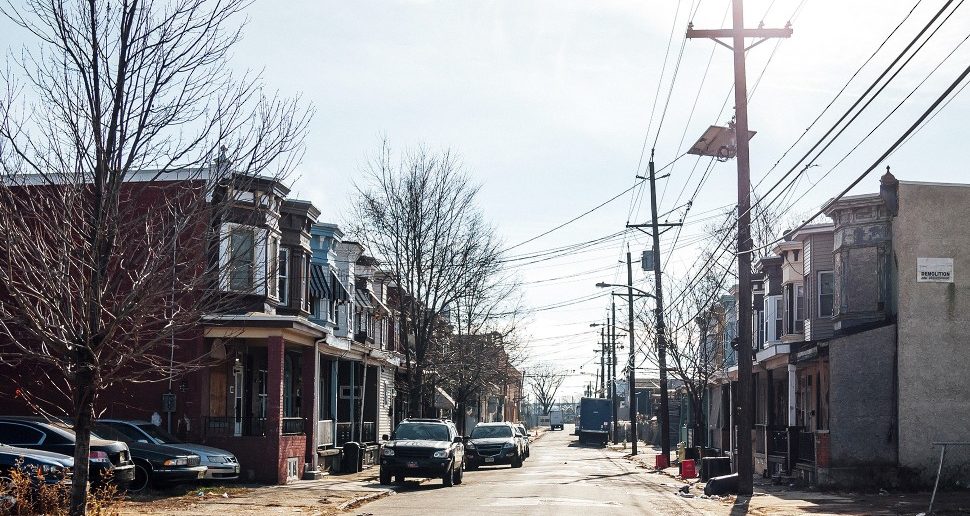Further proof that ‘your zip code is more important than your genetic code’

Black residents living in highly segregated neighborhoods have significantly shortened life expectancies, reports a new Northwestern Medicine study published in JAMA Health Forum.
Compared to residents living in less segregated predominantly white neighborhoods, life expectancies of people in highly segregated areas are four years shorter on average, the study found.
By pinpointing significant differences in life expectancy by neighborhood, the study quantifies how residential segregation may contribute to racial health inequities based on where one lives. Not only were lives shorter, the study also found residents in more segregated areas were more likely to lack college education, live below the federal poverty line and be unemployed. These traits in part represent the social determinants of health.
“A common phrase is ‘your zip code is more important than your genetic code,’” said corresponding study author Sadiya Khan, MD, MSc, the Magerstadt Professor of Cardiovascular Epidemiology in the Department of Medicine and a Northwestern Medicine physician. “At a broader level, we’ve learned much about the health consequences of adverse social determinants of health, but we were trying to better understand on a local level what the implications of racial segregation are on life expectancy.”
Although previous research has examined life expectancy among racially segregated populations by state and county, this study is the first to analyze life expectancy by neighborhood. According to the researchers, their findings underscore the long-standing and persistent impact of residential segregation perpetuated by discriminatory housing practices, such as redlining. The authors also said this was explained by related socioeconomic disadvantages, which require analysis at the neighborhood level.
“By looking at this on the state or county level, you often don’t get at the impact of segregation at the neighborhood level; this emphasizes the importance of the local environment in which one resides,” Khan said. “Cook County is a great example of this, with significant variation in life expectancy from among the highest in a neighborhood like Streeterville compared with the lowest in the South Side of Chicago.”
The study examined 63,694 census tracts (small, relatively permanent geographic entities within counties) across the U.S. and found the national average life expectancy was 78 years old. In predominantly Black neighborhoods with high racial segregation, the average life expectancy was 75 years old, which is significantly lower than the average life expectancy (79 years old) in neighborhoods with low racial segregation. In high- versus low-segregated neighborhoods, a higher percent of residents lacked a college education (81 percent vs. 69 percent, respectively), were living below the federal poverty line (24 percent vs. 11 percent, respectively) and were unemployed (16 percent vs. 8 percent, respectively), the study found.
Other factors — access to healthcare, housing stability and environmental pollution — were not included in the study model but are related to structural racism and likely to influence the association between segregation and life expectancy, Khan said.
“While the mechanisms by which neighborhood segregation may contribute to differences in life expectancy are many, we sought to focus on key socioeconomic factors that are likely attributable to redlining and downstream differences by neighborhood in economic investment and resources in communities, which all have downstream consequences on health,” Khan said. “These factors explained more than half of the differences in life expectancy across neighborhoods in our analysis.”
“For some time, we’ve studied neighborhood traits associated with health outcomes, but this is among the first studies associating segregation per se at the local level with health outcomes,” said senior author Kiarri Kershaw, PhD, MPH, associate professor of Preventive Medicine in the Division of Epidemiology. “The solution is less about the decision of where people live and more about changing the circumstances in which they live.”
Tackling health equity ‘where people are born, live and grow’
The study findings could help inform policy decisions to improve overall health in the U.S., Khan said.
“This isn’t an individual-level issue in which we say we need to improve someone’s blood pressure control or cholesterol level,” Khan said. “Those are really important, but without tackling this on a bigger level, making sure there’s equity in terms of educational opportunities, employment and a healthy environment without air pollution or excessive heat exposure at the local level where people are born, live and grow, we are going to miss a large part of what’s already happened before people walk into our clinics.”
Clyde Yancy, MD, MSc, vice dean for diversity and inclusion and the Magerstadt Professor and chief of Cardiology in the Department of Medicine, said local challenges require local solutions. “No single intervention fundamentally changes risk at a neighborhood level. Public health advocacy helps, but economic opportunities and high-quality education are immensely valuable.”
Two Northwestern initiatives aim to tackle just that, Yancy said. A new Bronzeville initiative through Northwestern Medicine intends to provide local care for the residents of Bronzeville, a neighborhood on the South Side of Chicago, and create economic opportunities for contractors, vendors and healthcare workers from that same neighborhood. Additionally, the legacy of the Northwestern Scholars program, whose goal is to increase access and successful matriculation of underrepresented Chicago Public Schools students with an interest in STEM to top-tier colleges and universities, “is an exemplary model of elevating the next generation and offers hope where previously there was only despair,” Yancy said.
Other Northwestern co-authors on the study include Cyanna McGowan, MPH, and Laura Seegmiller, MPH.






